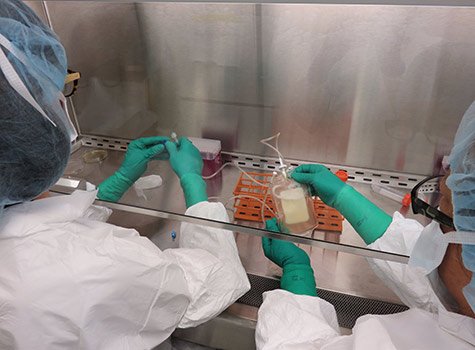The parents reported that the child intermittently wore a handmade “homeopathic magnetic hematite healing bracelet” that they had purchased from an artisan at a local fair (Figure). The child wore the bracelet for teething related discomfort and was sometimes noted to chew on it. Small spacer beads from the bracelet tested at the Manchester Health Department were positive for lead (17,000 ppm). No identifying marks indicating metal content or manufacturer were found on the bead. The vendor records were not available, and the bracelet maker could not be located.
Lead poisoning occurs primarily through oral ingestion of lead containing products. Lead paint, dust, and contaminated soil are the most common sources of lead exposure in children; however, nonpaint sources are often identified in acute poisonings (1,2). Cases of severe lead poisoning and death were linked to lead-containing charms and jewelry marketed to children in 2003 (3) and 2006 (4), resulting in large-scale recalls. In 2010, the Consumer Product Commission set the limit of lead content in items manufactured and marketed for children at 100 ppm.* This standard results in numerous recalls of children’s jewelry each year†,§ but does not apply to items that are not intended for use by or in children’s products.
Clinicians should be aware of the potential for lead poisoning in children who have ingested or mouthed any metal objects, especially jewelry. Caregivers should be made aware of the risks for lead poisoning resulting from children wearing or handling handmade or adult metal jewelry, even if items are manufactured or purchased in the United States, because infants have natural mouthing behaviors; these items can also pose a choking hazard for small children (5). Cases of lead poisoning in these situations should be reported immediately to local public health departments so that timely investigation can be conducted and the source eliminated to prevent further cases of poisoning.
https://www.cdc.gov/mmwr/volumes/66/wr/mm6634a6.htm
